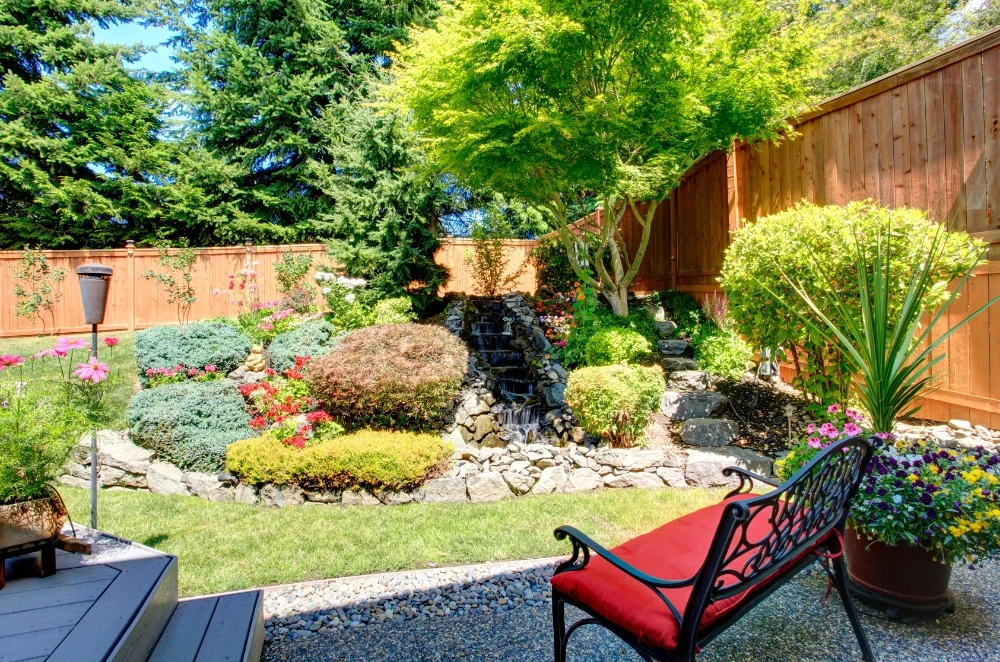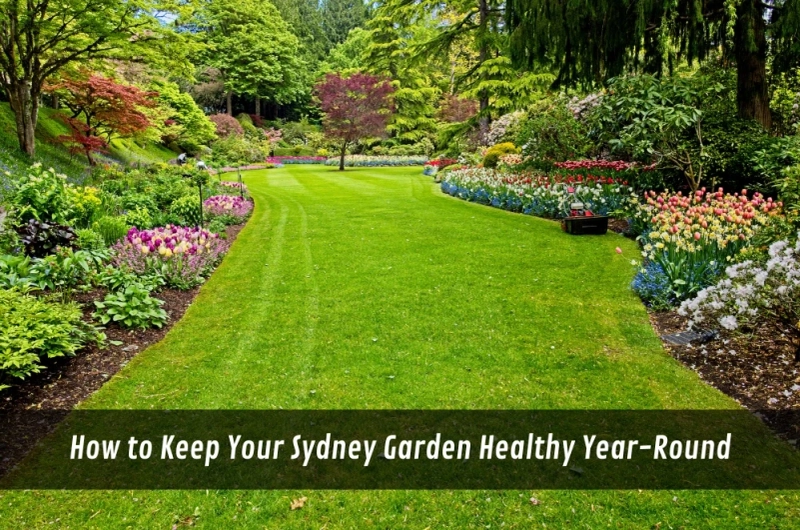I used to think a garden pretty much took care of itself. You mow, you water a bit, done. Right?
Not exactly.
My Sydney backyard taught me otherwise. One hot summer and a few weeks of forgetting to mulch, and everything turned crispy. The hedge browned. Weeds went nuts. It all fell apart fast.
That’s when I realised—if you want your garden to survive our weather swings, you need a plan. Not a full-time job. Just a few basics done regularly. These days, I stick to a few habits (and yes, I call in landscape maintenance services when I’m short on time).
Here’s what actually works to keep your garden healthy—year-round—in Sydney’s unpredictable climate.
Work with the seasons (not against them)
Gardens move through cycles. So should your care.
I learned this the hard way after planting tomatoes in July. Rookie error. They froze, died, and I started over in spring—properly this time.
Quick seasonal playbook:
- Summer: Early morning watering. Shade plants if needed. Top up mulch.
- Autumn: Perfect for pruning, feeding the soil, and planting long-term growers.
- Winter: Focus on structure. Tree work, edging, and soil improvement.
- Spring: Tidy, fertilise, and get ahead of the weeds.
You don’t need a spreadsheet—just a rhythm. This guide on how to plan seasonal garden jobs breaks it down if you want to go deeper.
When you work with the rhythm of the seasons, the garden starts to feel less like a chore and more like a space that flows. You're not constantly trying to fix things — you’re staying one step ahead.
The secret? It’s the soil.
Forget what’s growing above ground for a second. If the dirt underneath isn’t right, nothing lasts.
I used to dump fertiliser on sad plants and hope for the best. Didn’t realise the soil was the real issue.
What I do now:
- Chuck compost in every few weeks—kitchen scraps, leaves, clippings
- Mulch everything (I mean everything)
- Aerate compacted spots with a fork
- Stop using those fast-acting chemical boosters
I also started testing pH and soil texture. Not in a lab—just basic DIY kits from Bunnings. Turns out the back lawn was too sandy, which explained the drainage issues. A few seasons of layering compost and mulch later, it’s now holding moisture like a sponge.
Good soil holds water, feeds the plants naturally, and makes everything just… work better. You’ll feel the difference after a season or two.
Watering less often (but better)
You’d think more water = healthier garden. Not quite.
I was soaking everything daily. Then I realised half of it was evaporating before hitting the roots.
Now I:
- Water early morning
- Use soaker hoses or drip lines (less waste)
- Group plants by water needs
- Let deep-rooted plants tough it out a bit—it builds resilience
Sydney heat can be brutal, so every drop counts. The WA Government’s resource on water-wise gardening has practical tips worth stealing.
Also, don’t forget the rain. Even in dry seasons, Sydney still gets storms. I installed a simple rain barrel and diverted downpipes into beds. It doesn’t take much, and you’ll be surprised how far stored water can go.
Weed, pest, repeat
Weeds are sneaky. One week it’s “I’ll pull that later,” the next it’s a takeover.
Same with bugs. I once ignored aphids on a rose bush. Next month—gone. The whole thing is dead.
What works:
- Pull weeds after rain (way easier)
- Keep mulch thick—less sunlight = fewer weeds
- Use neem oil or garlic spray for soft pest control
- Don’t overreact—most gardens have a few bugs. That’s fine.
Suppose you’re worried about kids or pets, natural deterrents like crushed eggshells, vinegar, and companion planting work surprisingly well. Marigolds near veg patches have helped me keep whiteflies and beetles at bay.
Stay ahead of the mess
This one’s for the lazy (like me).
Don’t wait till it looks bad. A little regular maintenance saves a heap of time later.
What I do every fortnight:
- Quick trim on hedges
- Tidy the edges with a pair of scissors
- Skim weeds before they flower
- Check irrigation is still running where it should
- Sweep or blow away leaf buildup on paths and paving
And when I can’t keep up? I call a team that offers landscape maintenance services. They know what to look for—and I get my weekends back.
Choose plants that do the heavy lifting
Don’t fall in love with a plant just because it looks good at the nursery. Ask questions first.
I always check:
- Sun vs shade tolerance
- How tall/big it’ll actually get
- Pest resistance
- Native or drought-tolerant?
Also, try not to mix high-maintenance stuff with low-maintenance beds. You’ll just be pulled in too many directions.
Some of my all-time low-effort winners in Sydney include kangaroo paw, lomandra, lilly pilly, and rosemary. They’re tough, reliable, and require minimal input.
Tight on space? There’s a handy guide on garden design ideas for small spaces that’s full of tricks for balconies, courtyards, and narrow blocks.
Make use of your garden — or someone else will
This is something people forget. If you’re not using a space, nature will. Weeds, rodents, even aggressive vines—leave a bed untouched and you’ll see it fill itself.
Try to turn unused spots into something useful:
- A raised veg bed
- A compost zone
- A native pollinator patch
- A shaded seating area
Even a few pots of herbs by the kitchen door can make a difference. When you interact with the space, you’re more likely to notice what needs attention before it becomes a problem.
Design with function in mind
Looks fade. Practicality lasts.
I used to focus on “making it look good.” Now I think about:
- Shade in summer
- Edibles I’ll actually use
- Low-growers to protect the soil
- Plants that bring in bees, not mozzies
And I build with the future in mind. That little gumtree? In ten years, it’s going to change the whole light layout. So I plant accordingly.
The more your garden does for you — cooling the house, feeding the family, giving you privacy — the more you’ll want to keep it going.

Final thoughts: your garden doesn’t need to be perfect
The truth is, most people don’t want a show garden. They just want something that looks good, works for their lifestyle, and doesn’t fall apart when they’re busy. And that’s achievable.
You don’t need fancy gadgets or a landscaping degree. Just a rhythm. A bit of patience. And a willingness to let nature lead sometimes.
Some months, all I manage is a mow and a sweep. Other times, I’m knee-deep in compost and pruning for hours. It balances out. The key is to stay connected to what’s happening out there—even if it’s just ten minutes with a hose in the morning.
And if life gets hectic (as it does), bring in help. No shame in that. Having reliable landscape maintenance services on standby has saved my garden from becoming a jungle more than once.
Healthy gardens aren’t built in a weekend. But they’re absolutely worth the effort. A little now means a lot later.


